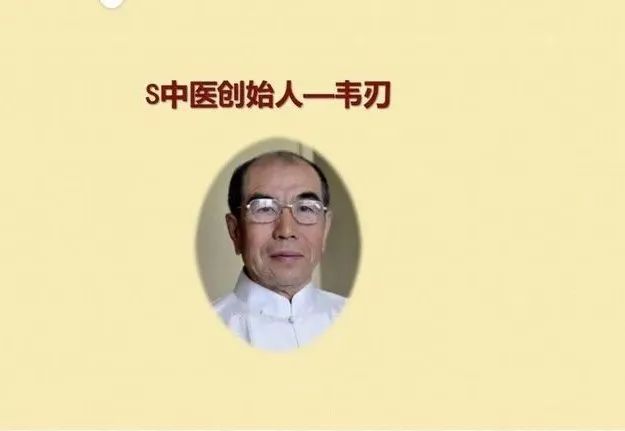
In the book S Zhongyi Famen, it is stated: All diseases can only be differentiated by the overall xu shi han re (deficiency and excess, cold and heat), with no distinction between local exterior and interior, meridians, or organs. This applies to treating colds, fevers, and even malignant tumors. If one understands this, despite the myriad symptoms, the overall state of xu shi (deficiency and excess) serves as the guideline, thus “the root of all diseases can be grasped, and the wealth of knowledge lies within a small compass.” In the previous article, we discussed how to distinguish xu shi; this time we will talk about cold and heat. If unclear, please refer to the text link at the bottom of the article.In fact, the differentiation of cold and heat in oscillating TCM is quite simple, unlike the traditional complexity.
Yin is a force that corresponds to Yang, which drives energy towards the lowest (most stable state – ground state) condition, a force that causes qi and fluids to settle, quiet, and cool down. This is measured by the presence of heat signs in the skin temperature.
Yang is a force that corresponds to Yin, which drives energy towards activation and excitation, a force that causes qi and fluids to rise, become agitated, and warm. This is measured by the presence of cold signs in the skin temperature.
Method: For cold and heat, it is about the sensation under your fingers; if the first feeling is hot, then it is heat; if it feels cold, then it is cold. As Buddhism teaches, the first thought is the truth, which also applies to oscillating TCM. The first sensation is usually the most accurate; when you try to carefully distinguish cold and heat, you may be disturbed by many factors later, such as the temperature of your fingers affecting the skin of the other person, leading to inaccurate judgments. Therefore, the first feeling when you touch is generally accurate. If you are still unsure, it is recommended to frequently train the sensitivity of your fingers. If you are a beginner and feel anxious, there is a particularly good method. Compare the sensation under your fingers with the temperature of your eyelids to determine cold and heat, yin and yang. This is a summary by Elder Wei and is very useful; use the sensation of cold and heat, the feeling under your fingers, preferably taking the sinking sensation as the standard, and compare it with the temperature of your eyelids. Let us review Elder Wei’s application of cold and heat:
Let us review Elder Wei’s application of cold and heat:
Using xu shi as the guideline, further distinguish the yin yang qi ye (the deficiency and excess of yin and yang energy): For example, if the temperature at the pulse diagnosis site is higher than normal body temperature, this indicates excess Yang; if the pulse is strong and rapid but empty, it indicates Yin deficiency; if the pulse is weak but has heat signs, it indicates Qi and Yin deficiency; if the pulse is strong and has heat signs, it indicates excess Yang, and one should first suppress Yang and clear heat; if the temperature at the pulse diagnosis site is lower than normal body temperature, if the pulse is strong, it indicates excess Yin (cold); one should first eliminate Yin – dispel cold; if the pulse is weak, it indicates deficiency cold, and one should first warm and tonify; if there are no obvious cold or heat signs, treatment should be based on the deficiency and excess of qi and fluids.
Stagnation, phlegm, and dampness all have distinctions of deficiency and excess, cold and heat, and should be diagnosed accurately and treated accordingly.

Case Studies:
[Yang Deficiency Fever]
■ Male, 4 years old. Consulted on September 2, 1991. Symptoms included fever (40°C) for three days, cold hands and feet without sweating, previously took anti-inflammatory medication and had an injection of analgesics, high fever persisted. The pulse was weak, cold, and damp; prescribed 10ml of Bu Gu Zhi (补故脂酊) (a tonic tincture), administered via umbilical feeding. After a while, hands and feet became warm, and sweating occurred on the back. The pulse showed Yang transformation, but the right wrist still felt weak and cold. Acupuncture at Guanyuan (关元) point was performed, leading to sweating and gradual reduction of body heat, with the pulse becoming more harmonious.
■ Male, 1 year old. Consulted on July 16, 1994. Symptoms included fever (37.8°C), irritable. The pulse was weak, cold, and damp; prescribed 0.5g of Fu Zi (附子) and Ban Xia (半夏) each, and 0.3g of Yun Qian (云芩), which immediately improved the qi mechanism, and undigested egg yolk was vomited, with mental state improving. After a while, he wanted to eat and drink, but the pulse did not show Yang transformation. That night, the fever reached 39.6°C, and by morning, it subsided.
[Qi and Yin Deficiency Fever]
■ Male, 5 years old. Consulted on January 15, 1990. Symptoms included fever (40°C), previously injected with penicillin and treated with bitter cold heat-clearing detoxifying herbs, but high fever persisted, with symptoms of fatigue, poor appetite, and low urine output. The pulse was weak, floating, and fluctuating, with the left side being larger and the skin temperature warm. Prescribed: Bai Shao (白芍) 15g, Dang Shen (党参) 7g, Gan Cao (甘草) 4g as one dose. After taking the medicine that night, he had continuous flatulence, increased urination, and appetite. By the next morning, the fever subsided, and he felt at ease.
■ Male, 1 year old. Consulted on January 8, 1996. Symptoms included fever (38.1°C) and cough. The pulse was weak, fluctuating, and moving with heat; prescribed 0.6g of Huang Qi (黄芪) and 0.2g of Huang Qin (黄芩), and by that afternoon, he had a bowel movement, cough reduced, and after taking the original prescription again, the fever subsided, and the cough stopped.
■ Female, 34 years old, a medical doctor. Consulted on December 12, 1996. Symptoms included fever (38.6°C) for three days, cough, dizziness, and pain in the throat and eyes. The pulse was moist, weak, and moving with heat; prescribed 0.2g of Huang Qi and 0.3g of Huang Bai (黄柏), and the fever subsided, with all remaining symptoms resolved the next day.
■ Male, 27 years old, a technical worker. Consulted on August 24, 1990. Symptoms included low-grade fever every afternoon, ranging from 37.5°C to 37.8°C, peaking at 38.4°C, persisting for over a week, along with cough and acid reflux after meals. The pulse indicated Qi and Yin deficiency, with the left wrist being weak; prescribed tincture: Yu Zhu (玉竹) 10ml, Dang Shen 5ml, Chai Hu (柴胡) 3ml, which led to gradual cessation of symptoms and a balanced pulse.
Text Link:
S振荡中医|Newcomer Quick Learning, How to Grasp Xu Shi


